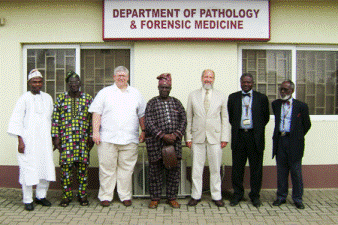Natural Resources, School of

Karl Reinhard Publications
Document Type
Article
Date of this Version
2002
Citation
Published in Transactions of the Royal Society of Tropical Medicine and Hygiene 96 (2002), pp. 640–643
Abstract
The objective of this experiment was to assess the utility of a commercially available enzyme-linked immunosorbent assay (ELISA) kit for diagnosis of giardiasis in archaeological human remains. The kit, a monoclonal antibody assay, is used to detect the presence of Giardia-specific antigen 65 (GSA65) in human feces. We utilized the assay in ancient fecal material. The material included desiccated feces found in mummies or in archaeological sites, and sediments from latrines. A total of 83 specimens, previously examined microscopically for parasites, were examined. The ELISA detected 3 positive samples, dated to about 1200 AD, 1600 AD, and 1700 AD. The ELISA was superior to direct observation. It was possible to identify G. duodenalis cysts by direct microscopy in only one of these samples. The results did not show cross-reactivity between this protozoan and helminths. The use of ELISA to detect G. duodenalis coproantigen could help the diagnosis of giardiasis in ancient human remains.
Included in
Archaeological Anthropology Commons, Ecology and Evolutionary Biology Commons, Environmental Public Health Commons, Other Public Health Commons, Parasitology Commons


Comments
Copyright © 2002 the Royal Society of Tropical Medicine and Hygiene. Used by permission.